Baby Foot is an exfoliating foot peel – you put your feet into two gel-soaked plastic socks for an hour, wash it off, then over the next week or so, flakes of skin come off and you’re left with… “baby feet”. There are dozens of imitations on the market now from brands like Soft Touch, Etude House, Treat My Feet, The Face Shop, Grace & Stella and Vena Beauty. The Shara Shara one is what I’ve used the most recently. They all have the same active ingredient and work the same way, though depending on the amount of active ingredient and the formula, some work better than others. 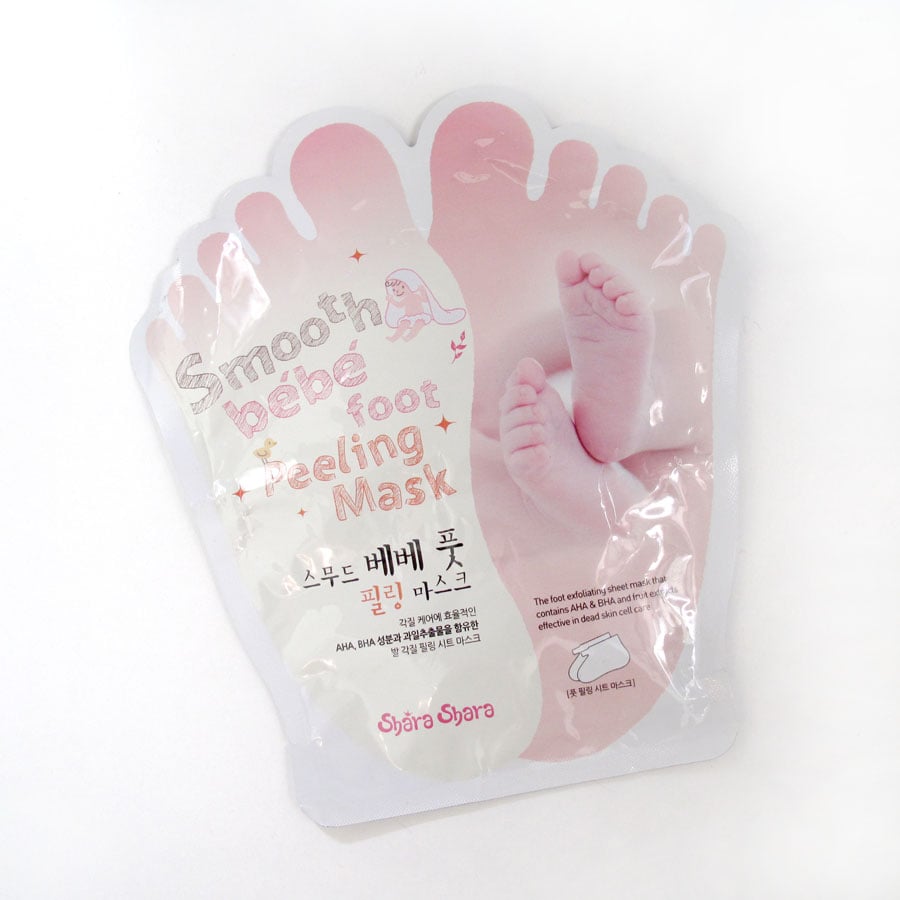
Baby Foot Ingredients
Here are the ingredients for Baby Foot:
Water, Alcohol, Lactic Acid, Glycolic Acid, Arginine, Butylene Glycol, PEG-60 Hydrogenated Castor Oil, Glucose, O-Cymen-5-ol, Citric Acid, Malic Acid, Citrus Aurantium Dulcis (Orange) Oil, Citrus Grandis (Grapefruit) Peel Oil, Dipotassium Glycyrrhizate, Cymbopogon Schoenanthus Oil, Nasturtium Officinale Extract, Arctium Lappa Root Extract, Saponaria Officinalis Leaf Extract, Hedera Helix (Ivy) Extract, Salvia Officinalis (Sage) Leaf Extract, Citrus Medica Limonum (Lemon) Fruit Extract, Clematis Vitalba Leaf Extract, Spiraea Ulmaria Flower Extract, Equisetum Arvense Extract, Fucus Vesiculosus Extract, Chamomilla Recutita (Matricaria) Flower Extract, Camellia Sinensis Leaf Extract, Houttuynia Cordata Extract, Phenoxyethanol, Hydroxyethylcellulose, Salicylic Acid
And the ingredients for Shara Shara Smooth Bebe Foot:
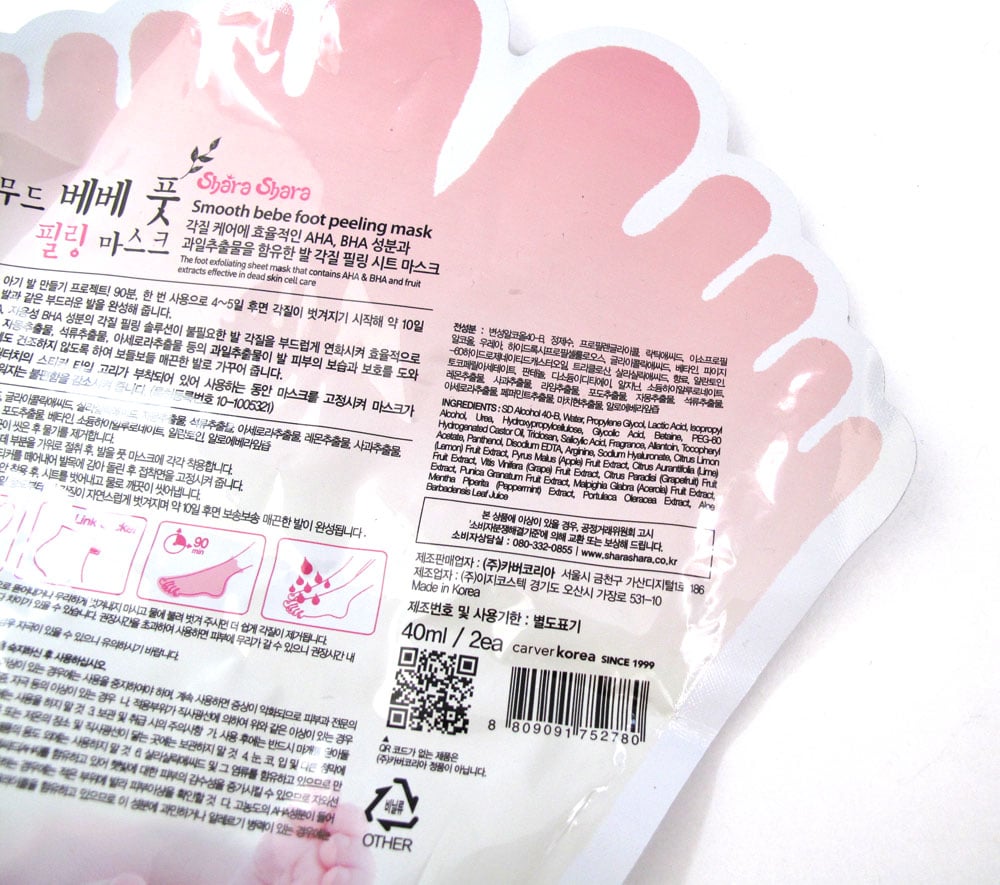
The key active ingredients are lactic acid and glycolic acid, which are alpha-hydroxy acids or AHAs.
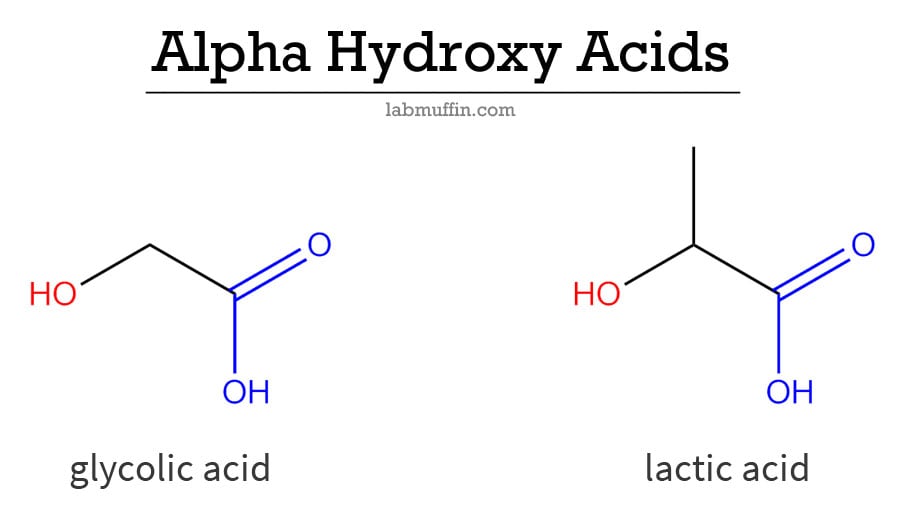
Alpha hydroxy acids are chemical exfoliants which consist of an OH hydroxy group (the red part) two bonds away from a carboxylic acid (the blue part). Exfoliation can be physical or chemical – physical exfoliation involves mechanically buffing away the surface layers of the skin (the stratum corneum). Chemical exfoliants like alpha hydroxy acids and beta hydroxy acids penetrate into the stratum corneum and break it up into smaller sections – this would naturally happen as the cells rise to the surface, but chemical exfoliants speed up this process. (For the difference between AHAs and BHAs, check out this post.)
At the moment, it’s not entirely clear how AHAs cause the dead skin layers to break down. It was originally thought that they break down the junctions or “glue” (desmosomes) holding the dead skin cell “bricks” (corneocytes) together, but the best contender for the mechanism so far is that AHAs trigger an influx of calcium into the corneocytes themselves, which burst, causing exfoliation.
Formulation Aspects for Foot Peels
For the AHAs to reach the lower layers of the stratum corneum, they have to penetrate into the skin, which is difficult because skin is a fantastic barrier against most chemicals, and foot skin is particularly tough. Two things help the AHAs penetrate: low pH (high acidity) and penetration enhancers.
Uncharged chemicals penetrate membranes better, and low pH causes AHAs to remain neutral (the science behine pH and AHAs is a little complex but it’s here if you’re interested). Penetration enhancers usually disrupt the skin barrier and make it easier for chemicals to penetrate – alcohol is a good penetration enhancer, so it’s generally the first or second ingredient in these foot peels. I know “disrupting the skin barrier” sounds pretty bad, but it’s necessary for tough foot skin, and it reverses reasonably quickly with alcohol when compared to the surfactants you’d find in most cleansers. Alcohol’s bad rap in general isn’t well deserved – there’s a breakdown of the myths surrounding alcohol in skincare on Futurederm here.
Why Do Foot Peels Have a Lag Time?
If you’ve tried a foot peel, you’ll know that it takes a few days or even a week before the peeling actually happens (and when it does, it’s a little frightening how much skin there is). That’s the way that chemical exfoliation works – it takes a little while for the dead layers to break down enough to detach from the layers underneath, unlike the instant gratification you get from physical exfoliation. (I have some photos of my peely feet if you’re really curious – it’s gross. Click at your own risk.)
References
X Cao, F Yang, J Zheng and KW Wang, Intracellular Proton-mediated Activation of TRPV3 Channels Accounts for the Exfoliation Effect of α-Hydroxyl Acids on Keratinocytes (open access), J Biol Chem, 2012, 287, 25905-25916.
H Löffler, G Kampf, D Schmermund and HI Maibach, How irritant is alcohol? British Journal of Dermatology, 2007, 157, 74–81.
This post contains affiliate links – please click through if you’d like to support Lab Muffin financially (thank you!). For more information, see Disclosure Policy.
Have you tried Baby Foot or similar foot peels? Do you love them or are you grossed out?
[lastupdated]


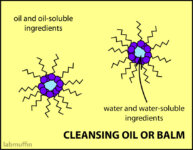
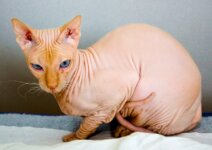
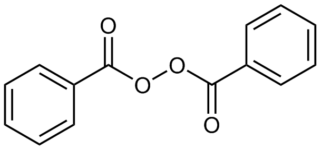
When i clicked through i was wondering why babies feet needed exfoliating, now i want to know how i can get my paws on some of this. It sounds perfect.
Hahaha! I assure you it’ll be as satisfying as it sounds.
So, I’m so scared. I made a mask of the boot on my face. Looking at all the chemical peels I decided to try and get some of the solution above and below my eyes. I’m seriously thinking I am going to go blind. The warning of the tony moly foot sock says avoid getting in eyes. I don’t mind my face peeling. I rubbed the solution from the cut out eye are on my eyelid. Sitting here regretting my vanity- cheap. Can you please respond. Will the solution slack through my eyelids and eat my eyes? I know it sounds crazy but with a delayed peeling reaction I don’t know the damage I’ve potentially done, you seem smart. Thank you, worried sick. Roberta
It should be fine though a little irritated!
I’ve tried a couple of these peel things in the past and I’ve always been kind of fascinated by how they actually work, so thanks for sharing! Really interesting read, as always 🙂
Jess xo
Thank you!
I’m grossed out but intrigued. Think I need to try!
They’re fascinatingly gross!
As always, so interesting to know the “why” !
Thanks! Glad you liked it 🙂
Which brand is the most gentle?
It’s hard to say without trying them all! None of the products have the concentrations of the ingredients on the packaging 🙁
I would much prefer this over using a foot file or pumice stone! I may have to look into this soon and spring is quickly approaching in the states:) Interesting read! xx
Thanks! Make sure you use it well before your feet are on display – it can be a bit scary-looking!
Thanks for the post.
I have the Purederm Exfoliating Foot Mask to try but I have a question. I read some reviews where people said that soaking your feet in water (eg. In bath) prior to using a foot mask increases the amount that is exfoliated. Perhaps as the thickened skin is softened from the water? I’m wondering what you think of this? I have quite thick callouses on the balls of my feet and heels due to high heel wear and would like to maximise exfoliation.
Thanks
That would work – you could also leave it on for longer than the recommended time, or soak then grind down the harder bits using pumice, then use the foot mask.
Really informative article. I always wondered how these foot peels worked.
Glad you liked it!
Sounds amazing, I have to get myself a great foot peel! I love your blog, keep up the great work!
Thanks so much!
Always been curious about this. When the peeling is happening (and after you achieve baby skin), is your skin more sensitive? How long does the dry skin come back after you’ve done the peel?
It’s not that much more sensitive at all actually – the dry skin slowly builds up again over the next few months.
I’m currently working up the courage to use foot peel I got from Memebox some time ago. How long does the peeling last?
A few months, depending on how hard you are on your feet and how good you are with upkeep!
I tried one of these before Christmas, from Footner. I soaked my feet in water beforehand as I’d heard it makes the process more effective, by enhancing the penetration I’d say after reading this. My feet felt really, really dry. Uncomfortably so at some points. It says not to moisturise, but I couldn’t bear not to. I think it helped the skin flake off in larger pieces. I also regularly soaked my feet in warm water to help loosen the peeling skin. Very gross but ultimately very satisfying. 3-4 months later the hard skin is starting to build up again but this treatment is not a time to put your feet on show for around 2 weeks. Best to be avoided in sandal season!
Good advice! I just went to a wedding during the worst of the peeling… lucky it was dark!
I can’t be the only one who was always a little disturbed that they all seem to use pictures of actual baby feet on the packaging…
Hahaha! It’s a bit weird yes…
What is the concentration of AHAs in these peels? Does it differ much from face peels?
None of them seem to say – I’d guess somewhere between 15-30%.
I love these peels and literally every time I use them I sit there and think to myself ‘I wonder how these work’. This was a fascinating read! Out of curiosity, why is the peeling with Baby Foot so much more extreme than what you would get with a face mask with AHAs? Is it just that the face mask would be formulated to have a lower concentration because the skin on the face is so much more delicate than on the feet?
Are any of these easy to buy in AUS?
Can I quote your article? I’m writing a piece for a website and was looking for some insight on the actual science of foot peels?
You can quote a reasonable amount with attribution, yes! 🙂
So “chemical” exfoliation — is this regulated by the FDA or is it considered a “cosmetic” rather than a drug? And have any of these products actually been approved? (if required, of course . . . )
And if the AHAs are chemical exfoliants, are these products really “all-natural” as many claim?
Thanks
They’re approved – since they only claim to work on the dead layers of the skin, they count as cosmetics (although the line is very blurry and the FDA definitions desperately need updating).
Thanks, Michelle!
I have used these peels (my favorite is Tony Moly Shiny Foot) several times and I love them. My feet seem to build up layers of skin pretty quickly, I always had that problem. I do pedicure routine every 2 weeks using callus shavers, then smoothing with pumice. I use creams and lotions and hardly ever wear shoes on bare feet and still the thick skin forms. Must be a curse or something 😀 (actually my father has the same problem so I am blaming him). Anyway – I use these peels in addition to my regular routine because they remove hardened skin in places where shaving would be too tricky – tips of the toes or around the nail bed. My skin is stubborn – I keep the peeling liquid on for 2 hours, then after about 10 days the peeling begins and lasts for about 5 days. I’ve discovered these peels by reading Asian Beauty on Reddit.
I tried something similar once by applying a home made salicylic acid solution and wrapping my feet in plastic wrap. It worked, but the effect was not enough and I didn’t like having peeling feet for a week. The whole point is to get pretty feet? Also I was afraid that for it to exfoliate the hard bits enough, it would be too agressive on the soft parts.
Now I want to try something like this:
https://m.youtube.com/watch?v=qzI1Azm7qj4
Works with fruit acids too, but immediately and only on the though parts. Unfortunately is often not sold to consumers. I could try to make something with lactic acid, but I’d have to be careful and start with a lower percentage till I found the perfect percentage, effective, yet still safe.
Always been curious about this. When the peeling is occurring, is your pores and skin extra touchy? How lengthy does the dry pores and skin come back once you’ve executed the peel?